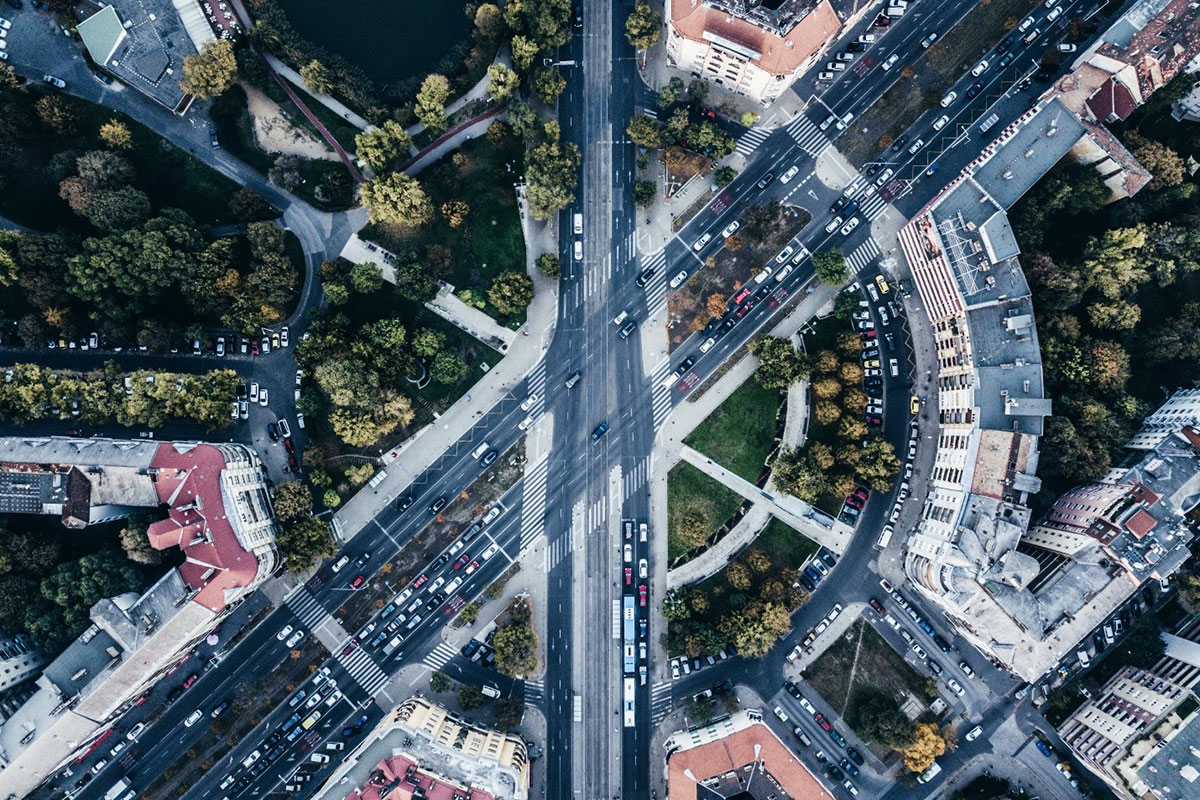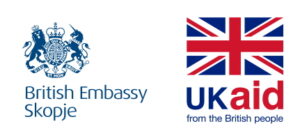Urban construction, geographical location, heating with the use of solid fuel, and cars the number of which is more than double compared to the capacity - these are the key problems of the capital of Bosnia and Herzegovina, which is why we often read the headlines "Sarajevo is the most polluted city in the world!".
A particular problem arises in the period between November and March, which is the height of the heating season because solid fuels are still used a lot for this purpose. Carbon neutrality is essential for the survival of the planet. Sarajevo citizens suffocate for five to six months a year due to air pollution.
"People, of course, burn anything and everything to survive in these difficult times, and that is somewhat understandable, but the higher authorities must be more involved to provide some solution in terms of alternative resources for fuel, which would reduce the air pollution in winter months. This issue is trending only between November and March and then sweep it 'under the carpet' until the next heating season when we bring it out again", explains Master of Science in Applied Meteorology and Climatology, Mr.Nedim Sladić for ResPublica.
Geographical location and urban construction
The geographic location of Sarajevo also contributes to the air pollution. Sarajevo is located in the Sarajevo Basin, which stretches from east to west and ends in the Sarajevo Field. The average altitude is 500 meters, while the peaks of the surrounding mountains exceed 2,000 meters above sea level. Very often, the capital of Bosnia and Herzegovina is high on the air pollution scale even during the summer months, but that pollution is not visible during that period. This does not mean that it does not create health problems for citizens and tourists.
Hand in hand with the geographical location, urban construction is one of the main "polluters" of the air in Sarajevo. At the end of May, residents of the Marijin Dvor neighborhood in the Municipality of Centar organized protests, expressing dissatisfaction with the regulatory plan and the planned construction of new skyscrapers which are supposed to have up to 20 floors. Today, they once again addressed the current Mayor of the municipality. They are looking for more greenery, playgrounds, cultural and recreational facilities, and not more concrete, which, they say, was promised by the Mayor in the election campaign four years ago.
Nedim Sladić notes that statistics from research studies of wind corridors show that these corridors are blocked, and this situation is made worse with the high-rise buildings. These things impact very high levels of air pollution in the area of the capital of Bosnia and Herzegovina, and as an additional problem, he cites the lack of width due to the geographical location - the capital of Bosnia and Herzegovina is "flattened" in the basin, which makes it susceptible to air pollution.
Congested traffic
When it comes to traffic, Sladić says that studies show that the infrastructural capacity of the capital city is planned for 70 to 80 thousand cars - currently, there are over 140 thousand cars in Sarajevo, which is twice as much as the predicted capacity. With the support of the European Bank for Reconstruction and Development and the European Investment Bank, significant advances were made in public city transport, all with the aim of reducing the use of cars, which would ultimately reduce air pollution.
 Source: freepik.com
Source: freepik.com
Following the reconstruction of the tram line, new trams and trolleybuses were bought and the construction of new railway tracks began in parts of Sarajevo that did not have such tracks before. Car sharing has also become available in Sarajevo recently, to contribute to a healthier environment. It is expected that such projects will reduce the emission of carbon dioxide by 80,000 tons because public transport vehicles are electrically powered and do not emit harmful gases.
Because most of the electricity in BiH, which is also needed to charge the batteries of electric cars and the public transport means, is generated by thermal power plants using coal, the reduction of carbon dioxide emissions would be even greater if Bosnia and Herzegovina carried out the process of decarbonization in the full sense, and the generation of electricity to be done using sustainable energy sources.
Green facades as one of the key solutions
The urbanization of Sarajevo is inevitable, considering the needs and the natural movement of the population. In this context, it is important to take care that every new building includes a new green area, to achieve a balance between concrete and greenery. Nedim Sladić says that green facades are becoming quite effective in many cities of the region, stating that, for example, in Tirana, they are already applied.
"Green facades lead to having a certain amount of greenery again. There are very few green areas in Sarajevo. We witness intensification of the urbanization. We should take care to have as many green areas as possible in the city, considering that they help to reduce the impact of the so-called 'urban heat island'. In fact, due to the large amount of concrete, those green cities would be a good solution, because they bring a dose of freshness, and fresher air that is, of course, much more pleasant, especially in the summer months when the heat is high. We should also mention the mechanism of those green facades with water that can run in a circle so that those facades are maintained with the flowing water. The rest of that water can be also recycled or used again", explains Sladić.
He notes that in the circular system of maintenance of green facades, it is very important to find a system that will contribute that, in the end, nothing is thrown away, because water is an important resource and our goal is to be able to reuse that water for other purposes. Green facades are one of the solutions that would reduce air pollution, but they are also very important in the context of weather conditions in this time of climate change.
"If we are talking from the aspect of urban floods, more greenery and less concrete means that we have fewer risks of flash floods. Inevitably, they will happen with greater intensity, sooner or later in the future. Therefore, as much as we can reduce the risk, we should start building so-called 'sponge cities' that will absorb all that water", warns Sladić.
Make cities livable and attractive for tourists
To prevent a situation in which the cities will become unbearable to live in, especially in the summer months, several planning changes are necessary. Green facades would contribute to a certain amount of freshness. The circular flow of water would maintain the life of these facades, and the water from the circular flow should be also used for some other purposes. It is important not to waste resources. In addition, sponge cities would play their role in reducing the risk of urban flooding, because with the increase in air temperature at the global level, the risk of flooding increases, given that the air can carry more water vapor.
The construction of buildings is an inevitable process, but it is important to ensure that we have green islands in place that would help us reduce the impact of urban heat islands. People all over the world are increasingly appreciating eco products, but also eco-cities. As a branch of the economy, tourism is becoming more affordable to people who love to travel to destinations that are green cities. An example of several green city solutions around the world is described on one travel blog with our European neighbors.
The citizens of Sarajevo, as well as tourists who are often seen with medical masks on their faces during the heating season, cry out for the lungs of the city – the green facades.
By joining the Net Zero Cities program of the European Union, Sarajevo accepted the goal set by this program – to be a carbon-neutral city by 2030. As a signatory to the Sofia Declaration, Bosnia and Herzegovina undertook to work towards achieving the goal of carbon neutrality by 2050. In addition, in its revised Determined Contributions, it committed to reducing greenhouse gas emissions by 33.2 percent by 2030 and by almost 66 percent by 2050, with the energy sector and high-carbon industries at the heart of the transition towards a low-carbon economy.
One of the positive developments is the "Inclusive Decarbonization" project, funded by the Government of Japan two years ago with a grant and implemented by the United Nations Development Program in Bosnia and Herzegovina in cooperation with the Ministry of Foreign Trade and Economic Relations of Bosnia and Herzegovina. This project included 20 small and medium-sized companies from three industries with high carbon emissions, electricity, steel, and cement, who received technical and non-refundable financial support for the decarbonization of their business.
This support included the installation of photovoltaic power plants, heating systems and compressors, heat pumps, thermal insulation of facades, replacement of lighting fixtures, and other green technology measures.
In anticipation of fast solutions, we should remind ourselves that the following global plans for environmental changes would save the health of the citizens of the capital of Bosnia and Herzegovina, and the health of the many visitors throughout the year.
The blog was created as part of the “Tales from the Region” initiative led by Res Publica and Institute of Communication Studies, in cooperation with partners from Montenegro (PCNEN), Kosovo (Sbunker), Serbia (Autonomija), Bosnia and Herzegovina (Analiziraj.ba), and Albania (Exit), within the project "Use of facts-based journalism to raise awareness of and counteract disinformation in the North Macedonia media space (Use Facts)" with the support of the British Embassy in Skopje.This edition of Tales from the Region is also done in partnership between ICS and the UPSURGE project, funded within the European Union’s Horizon 2020 under grant agreement No. 101003818.


